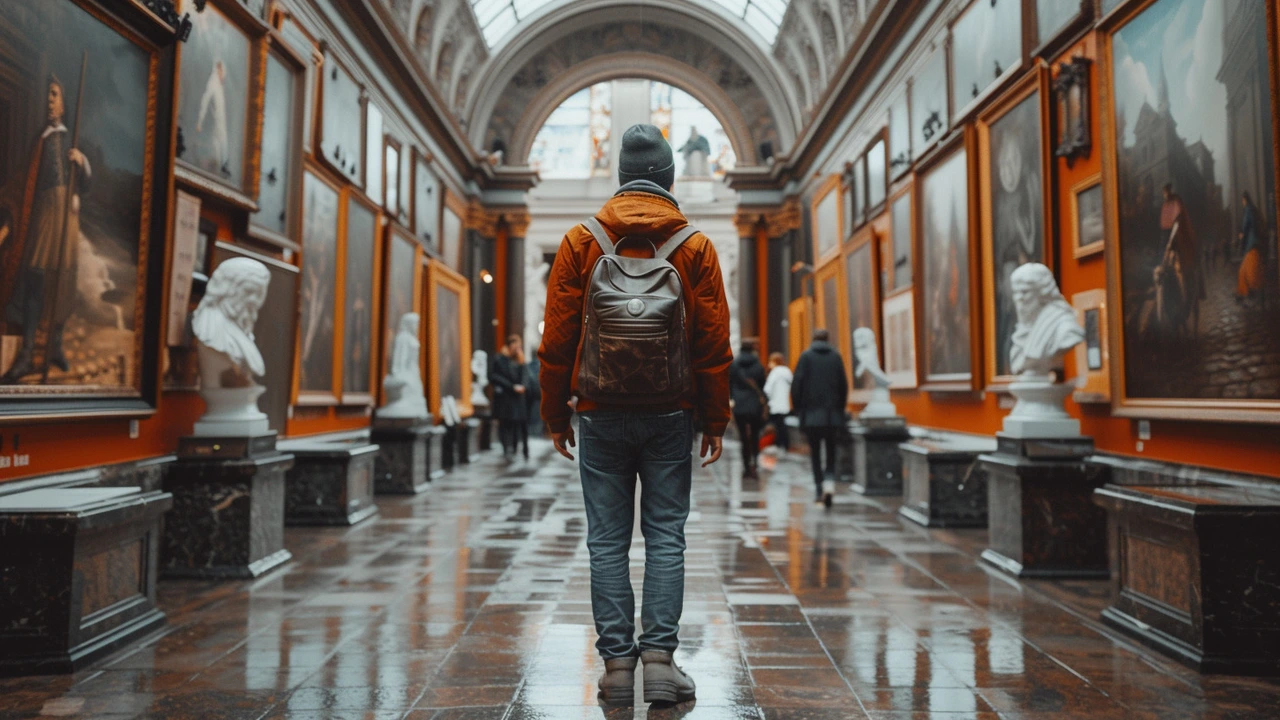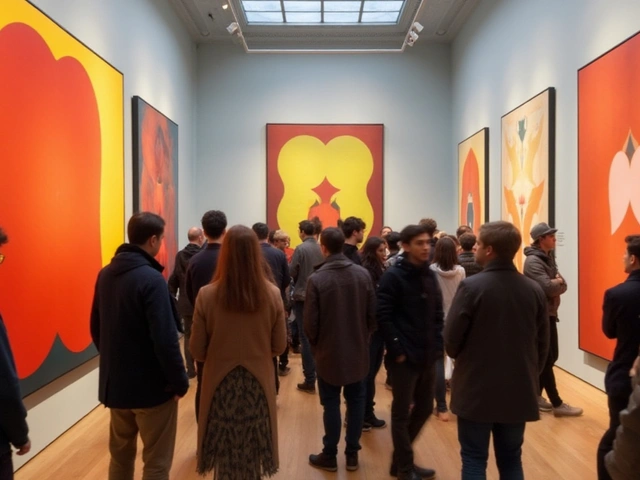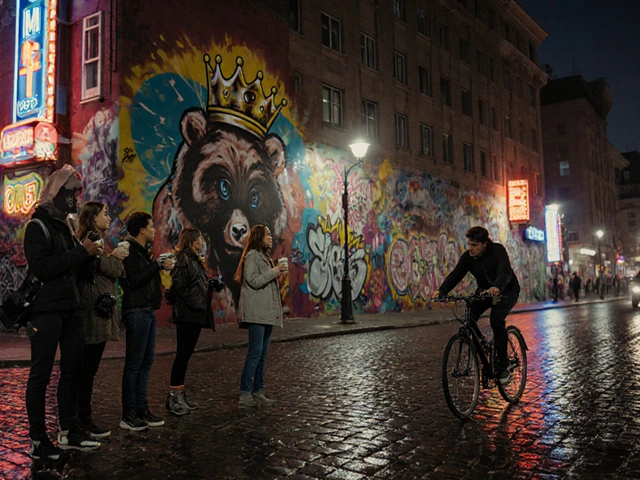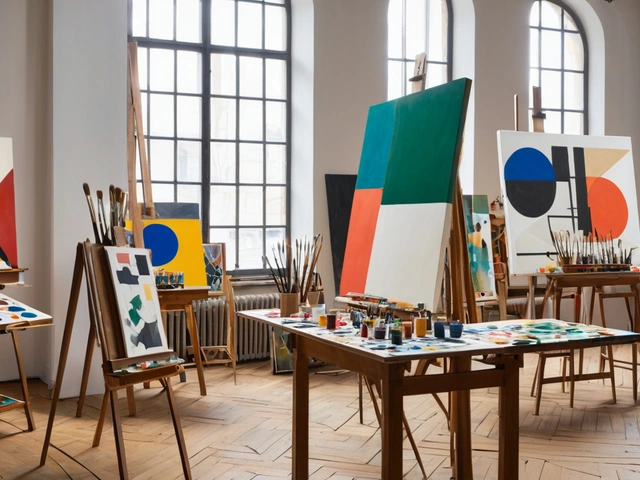Unlocking the Visual Puzzle: An Overview of Gothic Art
The world of Gothic art is such a fascinating time capsule, isn't it? It's a petrified snapshot of a time that was teeming with religious influences, earthly turmoil, and celestial yearning. You see, any art movement is a by-product of its socio-cultural environment. But as a casual observer, it's more than about knowing the history or events; it's about understanding the symbolism concealed in their masterpieces, especially in Gothic art where symbolism was central to the artist’s narrative.
Now, picturing Gothic Art might summon up high arched cathedrals, hauntingly beautiful Madonnas, and saints with their miracles - and you wouldn't be wrong. But today, we're going on an interesting deep-dive; we'll be pulling back the heavy drapes of mysticism and symbolism that shrouded Gothic Art, blowing off the dust, and shedding light on those cryptic details. For, as we decipher the symbolism, we can feel, just a little more vividly, the pulse of a world long past. With that said, let's journey back to a time where art was not just about aesthetics but about a visual sermon; a link between ordinary men and extraordinary divinity.
From the Eyes of the Saints: Decoding Holy Iconography
We've all seen them, images of saints with halos, carrying certain objects or performing specific acts. Consider it the artist's version of visual merchandising - carefully curated and presented to guide the viewer's eye and mind. Now, saints were highly revered figures of the medieval Christian faith, with stories of miracles and divine intervention. The heavy cloak of symbolism worn by these saints often illustrated their martyrdom or miracles and served as a guide for glorification and veneration.
So, if you see Saint Peter carrying keys, it's not because he was known for losing his car keys in the celestial parking lot. It's symbolic of the "Keys of Heaven", emblematic of his role as the gatekeeper of heaven. Another example, a saint with a sword doesn't imply a medieval sword-fighting champion, but might symbolize martyrdom through decapitation. Understanding this iconographical shorthand allows us to delve deep into the ongoing spiritual narratives of the era, revealing a moral guide, hidden behind art.
When Demons, Monsters, and Grotesques Illuminate Art
The idea of incorporating demonic figures and grotesques might seem a bit counterintuitive to our contemporary sensibilities, but in the Gothic world, they served a rather interesting purpose. You see, these otherworldly beings were depicted not to glorify evil or fear but rather to denote the omnipresence of the divine and the earthly combat between good and evil. So those creepy gargoyles that watched over the city from the soaring heights of the cathedral weren't just decorative items but served as a visual reminder of the lurking evil that the faithful needed to guard against.
Demon figures clawing at the saints weren't just a spooky tale out of a medieval Dark Fantasy novel but were an illustrative narrative of the trials and tribulation of the Holy; their struggle against sin and temptation. Remember, Gothic Art was about visual storytelling - and what's a story without conflict, turmoil, a villain to overcome?
Stories Carved in Stone: The Narratives in Cathedral Architecture
Ah, Cathedrals! The architectural grandeur of Gothic art, which seemed to touch the skies, was not just an artistic choice but a symbol of spiritual ascension, an attempt to breach the barrier between the earthly and divine. But have you ever gazed upon the meticulous carvings that adorned these structures, a myriad of biblical scenes, carved with such precision as if the stone had come alive? Every arch, column, and gargoyle served a purpose, was a piece of the puzzle, adding to the grand narrative of salvation and redemption.
Biblical scenes carved on Cathedral portals were like a stone-bound graphic novel, going beyond mere decoration. It was about bringing the Scriptures to the folk who couldn't read, making the divine accessible to the common folk while instilling moral and religious teachings. So next time you look at a cathedral, remember, it's not just an architectural marvel but a stone-bound bibliotheque of pictorial narratives!
Art as a Medium of Spiritual Transcendence
Gothic art served as a spiritual roadmap to the divine. Remember the enigmatic tunnels of light in Gothic paintings? That's not a medieval spin on the 1980s' neon trend but symbolizes divine intervention or God's presence. The gold leaf in the depiction of Holy figures? That's not about flaunting the bling but used to depict the celestial, holy light. This minutiae of symbolism embedded in Gothic Art enhanced the spiritual weight of the artworks, attempting to draw the viewers in, leaving them in awe of the sublime, the Divine.
Now, here's a little story from my own life that gave me a newfound perspective on the spiritual essence of Gothic Art. I was visiting the Chartres Cathedral, lost in the labyrinth of art, when a tour guide pointed out the blue stained glass which I figured was just aesthetic. But then, he revealed, that blue was not just about creating Instagrammable aesthetics but was symbolic of heavenly purity, a visual discourse of the divine. That got me thinking, looking, and understanding art in a way that transcended beyond the aesthetics.
Deciphering the Language of Colours in Gothic Art
If art is a visual language, then colours are its alphabet. In Gothic art, colour symbolism played a critical role as a conduit of relaying the underlying sentiments and moral codes. Religious figures bathed in gold portrayed divinity, celestial beings while blue signified heavenly grace, green for life, fertility, purple for penance, mourning. This doesn't render the artwork into a colouring book with set rules but adds another layer of meaning, helping us feel the emotion, the sanctity that the artist sought to impart.
To wrap it up, decoding the symbolism in Gothic art is like holding a mirror up to the past, allowing us to journey back, and traverse the medieval socio-cultural landscape from where this art movement sprung. So, while Goth might invoke images of black eyeliner and heavy metal now, centuries ago, it was creating a spiritual dialogue through an artistic vocabulary of colours, metaphors, and iconography. As you unlock each symbol, you're opening doors to a forgotten world, so go on, enjoy this immortal dialogue between the past and the present!




